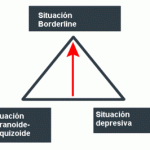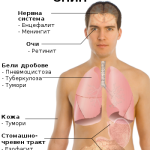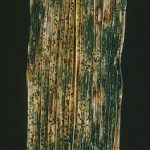Mental health articles
OF mental health care and mentally ill
Neurophysiological formulations of conversion disorder

Cadena De Amor , Coral vine, Mexican Creeper, Antigonon leptopus…..Hoa Ti- gôn …#3 (Photo credit: Vietnam Plants & The USA. plants)
Neurophysiological formulations of conversion disorder
Neurophysiological formulations of conversion reactions have received considerable attention. The neurophysiological formulation for conversion suggests that conversion symptoms result from some form of damage or malfunction of the brain. Whitlock proposed a neurophysiological conceptualization of conversion in which conversion disorder is considered primarily a disorder of attention and vigilance. The lack of attention and concern (i.e., la belle indifference) on the part of the conversion patient is due to a ‘‘selective depression of awareness of a bodily function’’ brought on by corticofugal inhibition of afferent stimulation. The corticofugal inhibition of sensory stimulation occurs at the level of the brain stem reticular formation. Ludwig added that memory impairments observed in patients with hysteria were due to the same mechanism proposed by Whitlock. In an attempt to examine neurophysiologically based assumptions pertaining to attention and memory dysfunction, Bendefeldt, Miller, and Ludwig had seventeen hospitalized conversion hysterics complete a series of tasks under nonstress (supportive behavior on the part of the experimenter) and stress (unsupportive behavior on the part of the experimenter) conditions. Their study also included a control group of nonpsychotic patients.
Overall, the results indicated that the conversion group had heightened suggestibility, greater field dependency, and greater impairment of recent memory, vigilance, and attention. The authors then used stepwise discriminant function analysis and were able to classify correctly fourteen subjects out of seventeen in the nonstress condition and sixteen subjects out of seventeen in the stress condition. However, the classification analysis should be questioned because the authors essentially had one subject per dependent variable. Despite this statistical weakness, their data does provide some interesting possibilities for a neurophysiological model of conversion disorder. Studies that examined somatosensory average evoked responses substantiate the utility of a neurophysiological formulation of conversion disorder. In a study by Hernandez-Peon, ChavezIbarra, and Aguilar-Figueroa, monitoring of somatosensory evoked responses from both the affected left upper extremity and the corresponding unaffected limb of a 15-year-old female patient with hysterical paralysis revealed an absence of evoked potentials during wakeful stimulation.
However, during light central anesthesia (using a barbiturate), significant evoked potentials appeared following stimulation of the left upper extremity. Halliday found no appreciable differences between normal and anesthetic conditions in his analysis of somatosensory evoked potentials in a 40-year-old man with hysterical anesthesia of the left thumb and index finger. Levy and his associates confirmed the Hernandez-Peon et al. findings for low levels but not for high levels of sensory stimulation. Another line of research supporting the neurophysiological formulation of conversion disorder came from studies that examined lateralization of symptoms in conversion hysterics. Bishop, Mobley, and Farr , having conducted or in conducting a 10-year retrospective study of conversion reactions, reported that 70% of 430 patients with conversion neurosis, hysterical neurosis, hysterical personality, and psychophysiological CNS or musculoskeletal disorders had their symptoms on the left side of the body. Similar findings have been reported in other studies. These studies also suggest that the right cerebral hemisphere is particularly involved in modifying affective or motivational components of somatic symptoms.
Related articles
Post Footer automatically generated by wp-posturl plugin for wordpress.
More from my site
Tags: conversion, disorder, neurophysiological










Leave a Reply